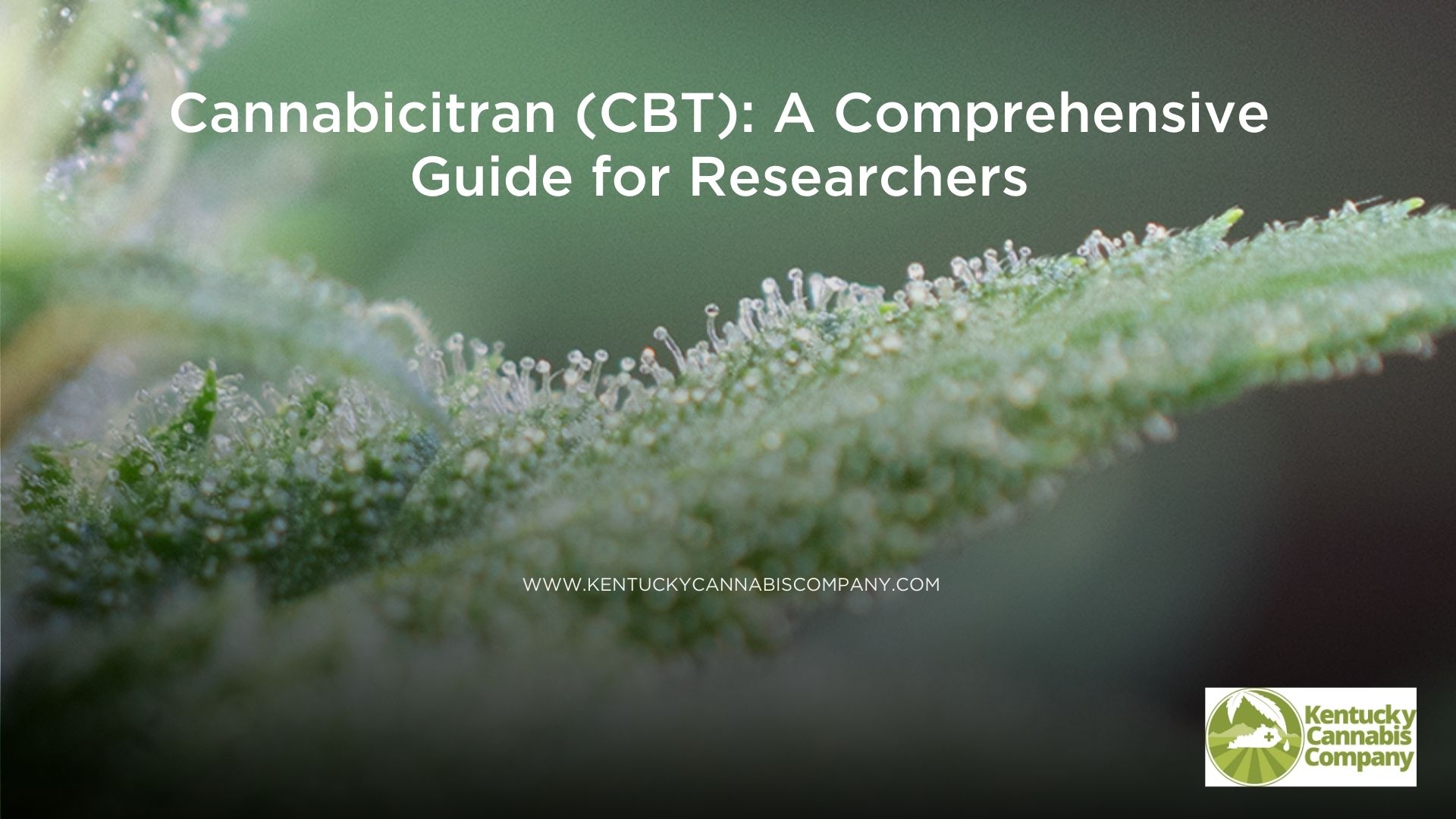
Discover Cannabicitran (CBT)
Introduction: As the cannabis research frontier expands, lesser-known cannabinoids like Cannabicitran (CBT) are stepping into the spotlight, hinting at a realm of untapped therapeutic possibilities. Unlike the well-documented CBD and THC, CBT remains a largely uncharted territory. In this comprehensive guide, we delve into the potential benefits and unique characteristics of CBT, offering a glimpse into its promising future.
What is Cannabicitran (CBT)?
Cannabicitran, abbreviated as CBT, is a minor cannabinoid inherent to the cannabis plant. While it shares structural similarities with THC, its non-psychoactive nature sets it apart, paving the way for potential medicinal applications without the “high” associated with THC.
Potential Health Benefits of CBT
The scientific community is beginning to unveil the potential health benefits of CBT. Though research is in nascent stages, early findings are promising. Here are some areas where CBT could make a significant impact:
- Chronic Pain Relief: CBT may play a role in alleviating chronic pain, as suggested by animal studies.
- Anti-Inflammatory Properties: The anti-inflammatory potential of CBT could be a boon for individuals suffering from conditions like arthritis or multiple sclerosis.
- Anxiety and Depression Alleviation: Initial studies on rodents hint at CBT’s ability to mitigate anxiety and depressive behaviors.
- Neuroprotection: CBT might offer neuroprotective benefits, safeguarding against brain damage caused by ischemia.
- Cancer Treatment: Some research suggests that CBT could be harnessed in cancer treatment strategies.
CBT vs CBD: Unveiling the Distinctions
Though both part of the cannabinoid family, CBT and CBD possess distinct structural and functional characteristics. For a deeper understanding of their differences, explore here.
Frequently Asked Questions
- Is CBT Legal?
CBT’s legality hinges on regional laws, given its non-psychoactive nature, it’s not regulated under the Controlled Substances Act. - How is CBT Extracted?
CBT extraction involves methods like CO2 or ethanol extraction. Ensuring a high-quality extraction process is crucial for preserving the purity and potency of CBT. - How Can I Incorporate CBT into My Research?
Incorporating CBT into research necessitates sourcing from reputable suppliers and selecting the appropriate administration method, be it oral, topical, or inhalation.
Conclusion
Cannabicitran (CBT) stands as a promising area of research in the ever-evolving cannabis landscape. Its potential therapeutic benefits could significantly contribute to diverse treatment paradigms. As research advances, the narrative of CBT and its place in the cannabinoid family will continue to unfold.
If you’re keen on exploring high-quality CBT products or furthering your understanding of cannabinoids, visit Bluegrass Hemp Oil or explore more resources at the Kentucky Cannabis Company.
References
- Morales P, Hurst DP, Reggio PH. Molecular targets of the phytocannabinoids: a complex picture. Prog Chem Org Nat Prod. 2017;103:103-131. doi: 10.1007/978-3-319-45541-9_4.
- Qiao Y, Guo Z, Fang Y, et al. Anti-breast cancer activity of cannabitriol, a cannabinoid from Cannabis sativa ssp. sativa. Cancer Manag Res. 2020;12:12019-12025. doi: 10.2147/CMAR.S281206.
- Romano B, Pagano E, Orlando P, Capasso R, Cascio MG, Pertwee RG, Borrelli F. Pure cannabicitran from Cannabis sativa: A cannabinoid with an atypical structure and an atypical pharmacological profile in vitro. J Nat Prod. 2016;79(2):324-331. doi: 10.1021/acs.jnatprod.5b00954.
- Takeda S, Hashimoto M, Ohno-Shosaku T, et al. Cannabinoid 2 (CB2) receptors in the brain: role in central immune function. Neuropsychopharmacology. 2012;37(1):183-195. doi: 10.1038/npp.2011.186.


Recent Comments